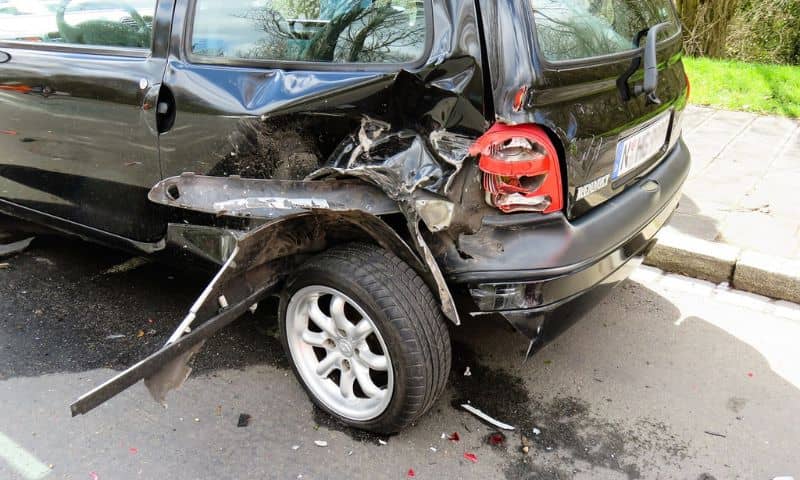
Is It Your Fault If Someone Pulls Out In Front of You, Causing an Accident?
Got into a wreck when another driver pulled out of nowhere? I feel your frustration. Even with the right of way, insurance may pin partial (or full) blame on you. It’s enough to make your blood boil.
Truth is, fault gets tricky with these “pull-out” accidents. Police reports only go so far if insurers spot wiggle room to divvy up responsibility in the details. It sucks when you’re already suffering – I know.
But hang tight. We’ll walk through what insurance companies focus on when assessing fault after pull-out crashes, West Virginia fault laws, and how to fight liability disputes.
Did the Other Driver Have a Stop Sign or Red Light?
In scenarios where a driver pulls out from a stop sign or turns left against a red arrow, they are almost always deemed predominantly at fault if they collide with oncoming traffic.
Failing to yield right-of-way represents a clear traffic offense. However, insurance companies may still try disputing fault percentages based on arguments around sight lines, obstructions, or the driver’s speed. We’ll explore some of these “comparative negligence” disputes below.
Were There Obstructions Blocking the Other Driver’s View?
While running stop signs is obviously negligent, sometimes physical obstacles can obscure a driver’s line of sight at intersections and stop signs. Common examples include fences, trees, large embankments, and tall vehicles parked near corners.
If it appears visual impedances prevented another driver from safely gauging oncoming traffic before pulling out, insurers may attempt arguing “partial fault.” However, it still remains the legal responsibility of the driving pulling out to inch forward until achieving full sightlines. They must verify no cross-traffic exists before accelerating through.
There have been many cases of failure-to-yield accidents in areas with construction, roadside vegetation overgrowth, or accumulated snow banks. Drivers can’t simply blast through stop signs and red lights without confirming it’s safe first. Police and insurance companies may look at this when determining liability. This situation can determine damage and injuries and get you the compensation you deserve.
How Severe Was the Car Accident?
Another method for gauging fault percentages involves examining the accident’s physical dynamics – basically, the crash physics implied by damage patterns, debris fields, and rest positions of the vehicles.
Police accident reconstruction specialists pore over these details to calculate each vehicle’s approach angle, estimated speeds, braking and swerving marks, and more. If it’s possible to reasonably stop or avoid a vehicle pulling out, insurance companies may argue the driver shared some fault for not reacting quickly enough.
However, when crashes occur at full-posted speeds and result in violent, unrestrained collisions, it strongly suggests the yielding driver failed to judge cross-traffic distances accurately and pulled out prematurely. The brunt of liability typically falls in their lap.
Gathering Evidence to Prove Your Case and Determine Fault
Since comparative negligence arguments muddy liability after an accident, you should prioritize getting rock-solid proof of what occurred before they file a claim. Indisputable evidence supporting your account prevents adjusters from resorting to their old “well, you share some blame, too” tactics.
Police Report Details and Diagrams
Ask the responding officer for an official accident report. Make sure they document stuff like:
- What you could and couldn’t see approaching the intersection (sign/light placement, obstacles blocking view)
- Exact spots where vehicles ended up after hitting each other
When police take your statement, stick to just the facts:
- How fast were you driving, and what was your path?
- Walk through exactly what happened leading up to impact.
Before signing anything, review the officer’s report. Make sure it lines up with your experience and leaves no room for interpretation. Flag any missing details or vagueness that insurance could twist later. Never admit you were at fault – leave conclusions to the police.
Photos and Video of the Accident Scene
While official reports carry weight, footage often delivers the knockout evidence punch. The old adage “a picture speaks 1000 words” remains true, especially in failure-to-yield crashes. Sources of potential video footage include surveillance cameras on nearby buildings or houses, dashcams, cell phones, and more.
As such, identifying and obtaining key footage related to your crash should be a top priority for you and your lawyer. By speaking to witnesses at the scene or submitting subpoenas and public records requests, you and your attorney can legally obtain crucial video footage to support your case.
Seek Out Independent Witnesses
Scan the area after a collision for potential observers driving nearby or pedestrians on sidewalks. Another car in the vicinity could have the details needed to ensure you are not at fault for an accident. Ask if anyone saw the sequence of events unfold and would provide a statement to police or insurance representatives later.
West Virginia Fault Laws
West Virginia follows “modified comparative fault” rules for injury claims. This means that if you are found to be greater than 50% responsible for the accident, you are barred from seeking compensation.
So, while being found 0% at fault is the goal, you can still collect compensation even if partial fault is assigned. Your compensation award will just be reduced by the percentage of fault.
Fighting Liability Disputes with Insurers
Sadly, even air-tight documentation doesn’t prevent some insurers from disputing fault to avoid full payouts. Companies and their adjusters may reject police reports and independent witness accounts or try claiming you shared minor negligence through speeding, distractions, etc.
In these situations, retaining aggressive legal advocates with accident law expertise proves essential. At Miley Legal, our personal injury lawyers have hands-on experience with car accident liability disputes. We know the tactics insurance companies use and can help you stay one step ahead in your claim.
Put Our Accident Attorneys in Your Corner
Proving fault after crashes at intersections is tricky. Insurance adjusters have all kinds of subtle ways to twist things and say you share some blame. It’s how they work.
Before they start muddying the waters, talk to someone who deals with these situations all the time. Connect with our car accident lawyers at Miley Legal, who know the tricks adjusters play to wiggle out of paying.
Our insider knowledge guides victims toward truly fair outcomes after unfair wrecks. Let’s team up to set things straight from day one. You focus on getting back on your feet. We’ll handle equipping you for the fight ahead. Contact us today for a FREE consultation.

